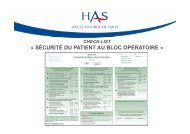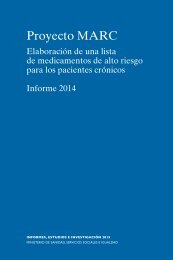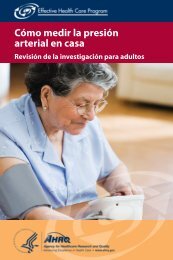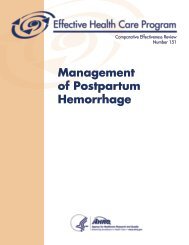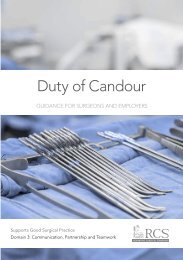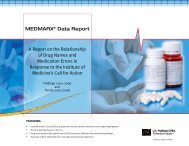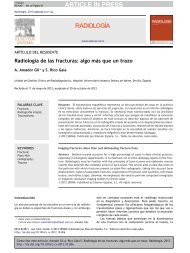for Invasive Procedures (NatSSIPs)
Z3q53
Z3q53
Create successful ePaper yourself
Turn your PDF publications into a flip-book with our unique Google optimized e-Paper software.
OFFICIAL<br />
iv.<br />
patient’s care pathway has deviated from that planned and when patients are<br />
handed over to critical care teams after procedures.<br />
Participation of the patient (and/or parent, guardian, carer or birth partner) in<br />
handovers should be encouraged when feasible.<br />
v. During handovers, only one person should speak at a time, and the<br />
conversation during the handover should relate only to the patient. Nonhandover<br />
activities should cease during the handover. Each team member<br />
should be given the opportunity to ask questions and clarify in<strong>for</strong>mation.<br />
4.5.2 Handovers to procedure teams<br />
i. There must be a <strong>for</strong>mal handover process from the ward or admission team to<br />
the practitioner receiving the patient in the anaesthetic room, procedure room or<br />
designated location in the procedural area.<br />
ii.<br />
iii.<br />
The handover should include when relevant, but is not limited to, a check of:<br />
• Patient name, with patients identifying themselves, checked against an<br />
identity band.<br />
• Correct documentation of weight.<br />
• Allergies.<br />
• Procedure, and site or side if appropriate.<br />
• Site marking if relevant.<br />
• Fasting status.<br />
• Relevant clinical features, e.g. blood sugar <strong>for</strong> diabetic patients.<br />
• An appropriate patient record.<br />
• A properly completed consent <strong>for</strong>m.<br />
If there are any omissions, discrepancies or uncertainties identified, these must<br />
be resolved be<strong>for</strong>e the next stage of the patient pathway, i.e. the sign in. On<br />
rare occasions, the immediate urgency of a procedure may mean that the<br />
handover may have to be completed without full resolution of any omissions,<br />
discrepancies or uncertainties.<br />
4.5.3 Handovers during procedural care<br />
i. Handover between any members of the procedural team during a procedure<br />
should be avoided if possible. When lengthy procedures can be predicted,<br />
working and shift arrangements should be adjusted to minimise changes in<br />
staff. If staff changes during a procedure cannot be avoided, they should be<br />
scheduled when possible and communicated at the team brief.<br />
ii.<br />
When there is a change in team members during a procedure or between<br />
procedures, the outgoing and incoming team members must ensure that they<br />
hand over all relevant in<strong>for</strong>mation, including any issues arising from the team<br />
brief, sign in and time out, and they should in<strong>for</strong>m the rest of the team about the<br />
30



